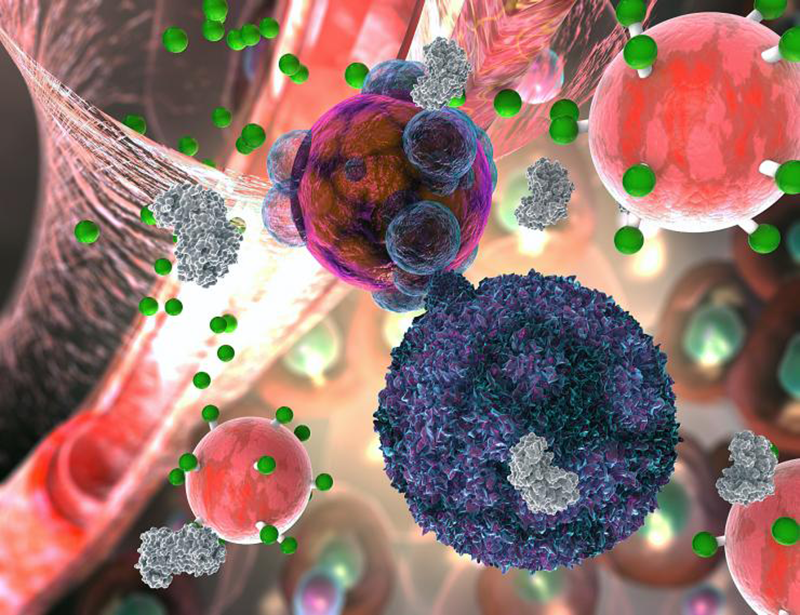When the human body rejects a transplanted organ, it receives serious injury and it is often a biopsy that reveals the rejection. Researchers at Georgia Tech have developed a new screening method that uses sensor particles and a urine test to detect rejection much earlier, more comprehensively, and without a biopsy needle.
Read more Smart Microrobots Swim Through Vessels and Adapt to their Surroundings
In the new method, the nanoparticle sensors accumulate in transplanted organs and detect immune rejection. Upon detecting rejection, they release molecules that turn the urine of the recipient fluorescent. Doctors can then use a simple urine test to assess if the organ has been rejected, potentially replacing invasive biopsy needles.
“Before any organ damage can happen, T cells have to produce granzyme B, which is why this is an early detection method,” said Gabe Kwong, a co-principal investigator in the study and an assistant professor in the Wallace H. Coulter Department of Biomedical Engineering at Georgia Tech and Emory University.
“This is sensitive enough to possibly detect budding rejection before you see significant injury to the transplanted organ and that could help clinicians treat early to prevent damage,” said Dr. Andrew Adams, co-principal investigator and an associate professor of surgery at Emory University School of Medicine. “Right now, most tests are aimed at organ dysfunction, and sometimes they don’t signal there is a problem until organ function is below 50 percent.”

The nanoparticles consist of an iron oxide in the core. It is coated with bristles made of amino acids that stick out from the iron ball with fluorescent “reporter” molecules attached to their tips.
When T cells release a specific enzyme involved in the early stages of immune rejection in the area of a nanoparticle, it cleaves the bristles and releases the fluorescent molecules, which travel through the bloodstream and end up in the urine, reports MedGadget.
The system has been tested in mice that received small skin grafts. This test could allow clinicians to accurately adjust the dose of immunosuppressants to control the immune response.
Read more Tiny Sensors Pave Way For New Wearable Medical Diagnostic Devices
“Adjusting the dose is very difficult but very important because heavy immunosuppression increases occurrence of infections and patients who receive it also get cancer more often,” Kwong said.
The results of the study were published in the journal Nature Biomedical Engineering.












